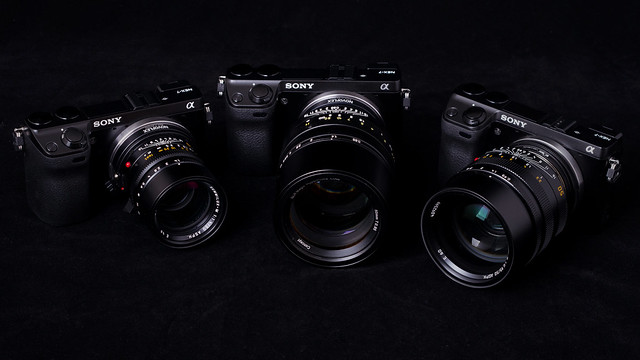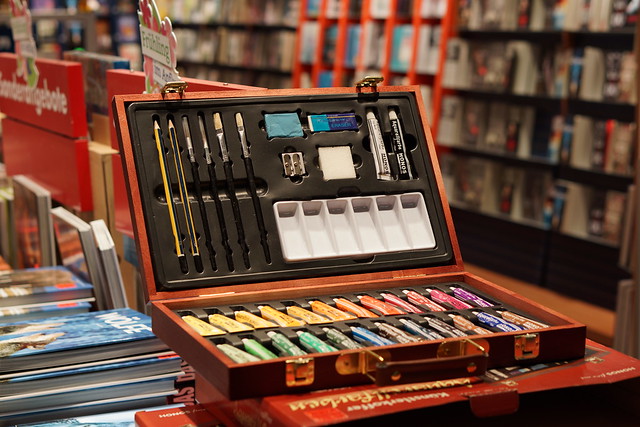Nachdem mich bereits die NEX-7 von der Qualität der aktuellen Sony Sensor-Generation überzeugte, legte nun die mutmaßlich ebenfalls mit einem Sony Sensor bestückte Nikon D800/D800E im Vollformat-Bereich nochmals eine Schippe drauf. Sie erreicht mit 36,3 MP und einem Dynamik-Umfang von 14,4 Blenden (gemäß DxOMark Sensor Scores) bereits Leistungsdaten, die bislang Mittelformat-Kameras mit einem vielfach höheren Preissschild vorbehalten waren. Allein das ist schon Grund genug, sich die D800E genauer anzuschauen.
Update: Siehe Ende des Artikels!
Warum die D800E?
Nikon liefert sein neues Pixelmonster in zwei Varianten aus. Die D800E unterscheidet sich von der D800 lediglich dadurch, dass ihr Sensor nicht mit einem Tiefpass-(Anti-Aliasing-)Filter bestückt ist. Der Hersteller weist allerdings daraufhin, dass die damit noch erzielte leichte Erhöhung der Pixelschärfe und Lichtempfindlichkeit, unter gewissen Umständen mit der Bildung von Moiré in feinen Texturen einhergehen kann. In der Praxis berichten die bereits mit dieser Kamera beglückten Nutzer allerdings, dass sie bislang selbst mutwillig diesen Effekt kaum herbeiführen konnten. Sofern Moiré doch einmal auftreten sollte, lässt es sich mit einigen darauf spezialisierten Werkzeugen (z.B. ab Lightroom 4 / Adobe Camera Raw 7) mit relativ geringem Aufwand entfernen, wie z.B. dieser Bericht zeigt. Wer also wirklich das Maximum an feinsten Details auch für sehr große Ausdrucke oder stark beschnittene Crops herausholen möchte, der wird vermutlich bereit sein, den Mehrpreis zu investieren.
Dieser 1:1 Ausschnitt aus dem Titelbild dieses Beitrags zeigt bereits anschaulich, wie hoch die Auflösungsreserven dieser Kamera sind:

(100% Crop aus dem Titelbild, aufgenommen mit dem AF-S Nikkor 50mm 1:1,4 bei F5.6 an der D800E)
Wahl der Objektive
Die nächste Frage, die man sich i.d.R. stellt, nachdem man sich zur Kaufentscheidung durchgerungen hat, ist die Frage nach den "passenden" Objektiven. Eine Kamera mit einem derart anspruchsvollen Sensor stellt die Qualität der verwendeten Linsen auf eine harte Probe. Diese Feststellung machen seit einigen Jahren auch schon die Besitzer von MicroFourThirds- und NEX-Systemkameras, deren aktuelle Sensorgeneration hochgerechnet auf die Fläche eines Vollformat-Sensors bereits mehr als 60 MP auflösen und an denen viele "Altgläser" früherer Analogfilm-Kamerasysteme in mehrfacher Hinsicht nicht mehr den Anforderungen moderner Digital-Sensoren gewachsen sind, wie auch in diesem Beitrag zu sehen ist.
Ob die derzeit angebotenen Zoom-Objektive über den gesamten Zoombereich und bei Offenblende eine genügend hohe Auflösung bieten, wird derzeit von vielen in Frage gestellt. Da ich ohnehin eine Vorliebe für lichtstarke Festbrennweiten hege, entschied ich mich deshalb zu folgendem "Starter-Pack":

V.l.n.r: AF-S Nikkor 24mm 1:1,4 G ED, AF-S Nikkor 85mm 1:1,8 G (2012er Modell) an der D800 E, AF-S Nikkor 50mm 1:1,4 G
















